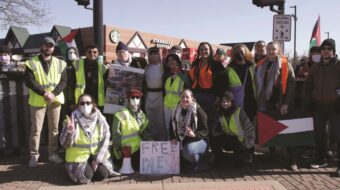Last week’s six-country meeting on reducing tensions and easing the nuclear standoff on the Korean peninsula ended with a mixture of hope and uncertainty. The three-day talks in Beijing between the two Koreas, the United States, China, Japan and Russia concluded on Aug. 29. Upon adjournment, the six countries agreed to continue the multilateral discussions in two months.
Summarizing the meeting, Chinese Vice Foreign Minister Wang Yi said that all participants supported a nuclear-free Korean peninsula and that the security concerns of the Democratic People’s Republic of Korea (North Korea) must be addressed.
Shortly after the meeting, the North Korean government news agency said the government will “clarify its will to dismantle its nuclear program if the U.S. makes clear its will to give up its hostile policy.” It also said that if the U.S. does not sign a nonaggression treaty, North Korea “cannot dismantle its nuclear deterrent force but will have no option but to increase it.”
Many people in the region fear the possibility of a second Korean war, which could spiral into a nuclear catastrophe resulting in tens of millions of casualties. The first Korean War was one of the deadliest in modern history. Over 1.4 million people died, including 54,000 U.S. troops.
In South Korea, 11 national Korean groups, including members of Parliament and labor unions, issued a statement in the days leading up to the talks which outlined the Korean people’s desire for “no war, but reconciliation, cooperation, peace building and reunification between two Koreas.” The South Korean groups warned of the perils of continuing military confrontation and expressed their concern about the U.S. military buildup in the area. Of special worry is the Bush administration’s nuclear first-strike policy and its $11 billion “upgrade” of U.S. military assets in South Korea.
Chinese Vice Foreign Minister Wang Yi said, “The American policy towards North Korea, this is the main problem we are facing.” The Washington Post reported that when Wang was “pressed later about North Korean threats to conduct a nuclear test and U.S.-led plans for military exercises in early September aimed at interdicting North Korean ships, he expressed concern about both nations’ commitment to that agreement.”
The roots of the current crisis lie in the U.S. Cold War foreign policy that sought to encircle the former Soviet Union, China and North Korea with U.S. military bases. In the 50 years since the Korean War armistice was signed, the treaty to formally end the war has never been ratified. The border between the two Koreas is the most militarized in the world, with the largest number of landmines deployed and one million troops facing off.
The U.S. went into the meeting with overt conflicts within the Bush administration on how to approach the issue, with the State Department reportedly favoring the negotiations and the Pentagon setting its sights on regime change through economic sanctions and possible military action. The hawks seem to have the upper hand. Bush himself has called North Korea part of the “axis of evil” and has threatened it with a pre-emptive strike. Economic sanctions against North Korea, including U.S. blocking of financial assistance from the International Monetary Fund and the World Bank, remain firmly in place.
In May of this year in South Korea, a new national coalition, National Council for Peace on the Korean Peninsula (NCPKP), was founded. With the support of 39 members of the South Korean Parliament, the group is promoting public hearings, international networking, and other activities to expand the popular participation in the peace movement. It opposes the use, development or deployment of nuclear weapons on the peninsula and advocates a new relationship with the U.S. based on sovereignty and equality.
The NCPKP, the Korean Federation of Trade Unions, and other groups have called on peace groups around the world to press for peaceful solution. The statement said, “We are determined to continue to cooperate with them [the international peace movement] to bring a peaceful resolution to the current crisis not only as a way to bring peace to the Korean peninsula but also as a way to contribute to building a peaceful world. We appeal to everyone to work together for the world where peace and co-prosperity prevail over war threats.”
The author can be reached at jleblanc@pww.org. She recently returned from South Korea.











Comments